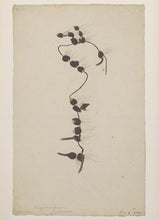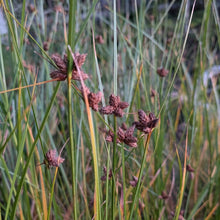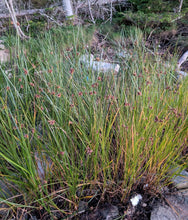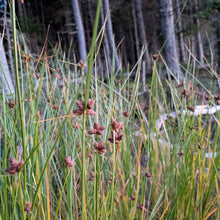Cosmopolitan Bulrush (Maine Ecotype)
Regular price
$3.75
Sale
Bolboschoenus maritimus
Origin: St. George's Peninsula, Maine
Improvement status: Wild
Seeds per packet: ~25
BOTANICAL SAMPLE - NOT GERMINATION TESTED
Life cycle: Perennial
Also called "sea clubrush," "alkali bulrush," and "bayonet grass," this native perennial sedge (Cyperaceae family, like papyrus) has a worldwide distribution. It also has edible seeds and roots — said to taste like sweet coconut milk! EFN co-founder Nate Kleinman found a small patch of the plant growing on St. George's Peninsula in Maine, right at the point where a small freshwater stream reached the high-tide line at the sea, and all of the seeds we're offering come from that population. The species is a halophyte, able to tolerate high salinity, but it can also grow in other environments (hence the inclusion of "cosmopolitan" in the name). It does strongly prefer moist ground though. It is a striking and ornamental grass-like sedge with large, almost fuzzy-looking seed-filled bracts at maturity.
Plants for a Future says this about the plant and its edibility: "Roots [are eaten] raw or cooked. Rich in starch, it is usually dried and ground into a powder. The roots form tubers at intervals along their length and new plants are formed from these tubers. When first formed, the tubers are white and starchy with a sweet coconut-milk flavor, they become black and woody with age. Tubers can be up to 2.5cm in diameter. Seed [is eaten] cooked. They can be ground into a powder and used as a mush."
From the USDA's Natural Resources Conservation Service: "Alkali bulrush is found at low to mid elevations in marshes, transient wet spots, pond margins, and backwater areas. It forms large dense stands in alkaline or saline sites. It can handle a pH of up to 9.0. It will grow on soils from fine clay to silt loam to sand. It can survive periods of total
inundation of up to 1 m deep. It tends to spread and reproduce when the water table is within 10 cm of the surface. It can occur in freshwater sites, but is usually a pioneering species that will be replaced over time with more permanent species. Seed and rhizome growth spread it. It is fairly resistant to fire, which will increase its production and protein content."
Very few seed companies offer seeds for this special perennial food crop, so we're happy to be joining their ranks! And excited to try growing this one ourselves!
NOTE: When harvesting and processing seeds, use gloves to prevent damage to the skin from tiny sharp fibers in the bracts.
GROWING TIPS: From USDA-NCRS - "Stratifying the seed in a mixture of water and sphagnum moss at 2°C [fridge temp] for 30 days may enhance the germination rate. Seed viability is quite high if stored properly for up to 20 years. Within the greenhouse, seeds need light, moisture, and heat for germination. Place seeds on surface of soil and press in lightly to assure good soil contact. Do not cover seed. Soil should be kept moist. The greenhouse should be kept hot (32°C to 38°C). Germination should begin within about one week. Maintain moisture until plants are to be transplanted."
See https://plants.usda.gov/DocumentLibrary/plantguide/pdf/pg_scma8.pdf for more information.










